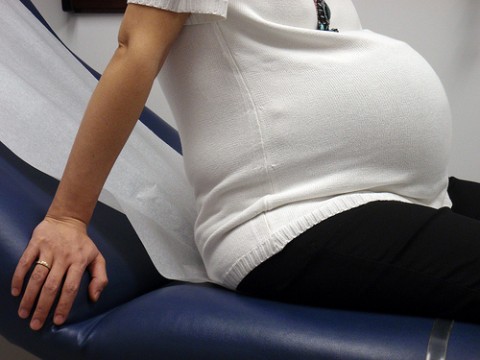Some women will not experience any symptoms of preeclampsia, which makes it incredibly important for all women to receive routine prenatal care. Women who do experience symptoms may not be sure if something is actually wrong, because the symptoms of preeclampsia can be similar to regular pregnancy symptoms. Some of the symptoms of preeclampsia include:
- Swelling of the hands or feet (edema)
- Headaches
- Sudden weight gain (more than two pounds per week)
- Nausea or vomiting
- Infrequent urination
- Changes in vision (blurred or hazy vision, flashing lights, vision loss)
- Dizziness
- Confusion
- Pain in the abdominal area or shoulder (usually under the right ribs or right shoulder)
How is preeclampsia treated?

The treatment for preeclampsia will depend upon how severe the condition is, and how far along the mother is in her pregnancy. If the mother has severely high blood pressure and is at least 37 weeks pregnant, her doctor may recommend that she be induced or have a C-section. While the only cure for preeclampsia is delivery of the baby, there are other treatment options. A woman may be prescribed certain medications that will regulate her blood pressure and prevent seizures. She may also be given steroid injections to help the baby’s lungs develop at a faster rate. Some pregnant women are also placed on bed rest, instructed to drink plenty of fluids and lay on their left side. Once again, in some cases, delivery is the only option to protect the health of both the mother and her baby.
Thank-you for reading this post. Please leave your thoughts in the section below.
References:
Preeclapmsia. (2009, September 9). Retrieved from http://www.ncbi.nlm.nih.gov/pubmedhealth/PMH0001900/
Preeclapmsia. (2011, April 21). Retrieved from http://www.mayoclinic.com/health/preeclampsia/DS00583
Signs and symptoms of pregnancy. (n.d.). Retrieved from http://www.preeclampsia.org/health-information/signs-and-symptoms